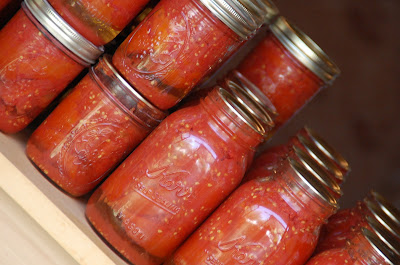 To be completely truthful, I'm not convinced I'd go the silicone bakeware route if I didn't have to consider cramming it into a suitcase and lugging it half way around the world. I truly covet Chicago Metallic Bakeware. There's something about those straight sides and sharp corners that give me the hope that my birthday cakes would somehow come out looking professional - no lopsidedness or crumbs in the frosting.
To be completely truthful, I'm not convinced I'd go the silicone bakeware route if I didn't have to consider cramming it into a suitcase and lugging it half way around the world. I truly covet Chicago Metallic Bakeware. There's something about those straight sides and sharp corners that give me the hope that my birthday cakes would somehow come out looking professional - no lopsidedness or crumbs in the frosting.Sigh. I do realize that I have neither the baking skills for professional cakes nor the luggage space to spare for such frivolities. And, as luck would have it for those of us living in the far corners of the earth, there's silicone bakeware!
The colors are very fun! The shapes are varied with a wide range to choose from. And you can always find them marked down in the cooking aisle at your favorite TJ Maxx.
Here's a festive orange bundt I bought in Almaty, Kazakhstan in September of 2005. It holds very fond memories for me as it helped me sharpen my nesting skills as we waited for Baby #1 to come home.
Continuing the fall theme, change up your muffins in an instant with this one.
Silicone bakeware is great for many reasons. It doesn't require butter and flour to ensure your baked goods come out with ease. Just turn your form over after a few minutes, give it a little twist, and out pops your pumpkin muffins or your streusel topped bundt.
But most importantly it goes from this-
to this-
and back to this-
Flexible, bounces back under duress, withstands the heat of the kitchen, cheerful, easy to clean and lightweight. No, it's not me. It's my silicone bakeware.



















































